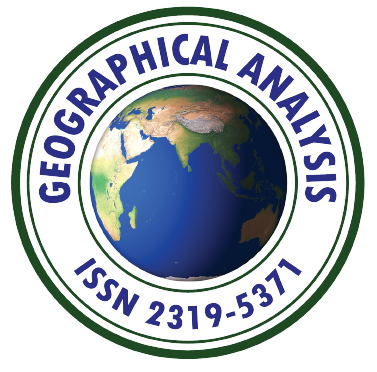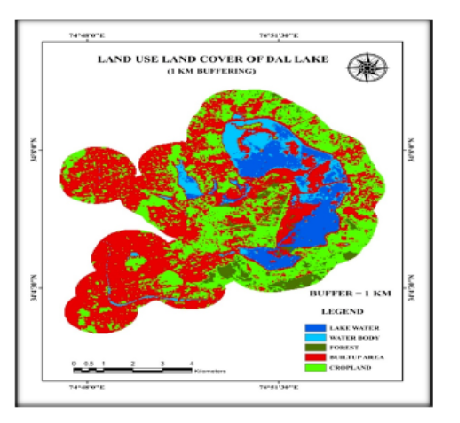
Geographical analysis
Department of Geography & GIS

Department of Geography & GIS

Geographical analysis
DOI: 10.53989/bu.ga.v14i1.24.176
Year: 2025, Volume: 14, Issue: 1, Pages: 9-14
Original Article
Supratim Karmakar1, Dhruba Jyoti Mudoi2∗, Subrata Dey3
1Assistant Professor, Department of Geography, Adamas University, Kolkata, West Bengal, India
2Research Scholar, Department of Geography, Visva-Bharati, Santiniketan, 731235, West Bengal, India
3Post Graduation Student, Department of Geography, Adamas University, Kolkata, West Bengal, India
*Corresponding Author
Email: [email protected]
Received Date:11 October 2024, Accepted Date:08 June 2025
Dal Lake is one of the most desired as well as popular visiting places among the tourists of India and abroad. The lake is situated in the heart of Srinagar City which is well connected with various parts of India. The natural elegance of the Himalayas makes the lake more attractive. This current paper is mainly focused on the spatial analysis of tourist spots over Dal Lake and the influx of tourists in the lake. Various statistical and cartographical methods like supervised classification of land use and land cover (LULC), and proximity analysis have been done to fulfil these objectives. The major data source of this study is collected from tourism department of Jammu and Kashmir. Primary data about the houseboat owners has been done by questionnaire survey. The paper finally tries to bring out the prospects of tourism development in Dal Lake in a sustainable way.
Keywords: Tourism, Lake, Houseboats, Buffer, Land use
© 2025 Karmakar et al.. This is an open-access article distributed under the terms of the Creative Commons Attribution License, which permits unrestricted use, distribution, and reproduction in any medium, provided the original author and source are credited.
Published By Bangalore University, Bengaluru, Karnataka
Subscribe now for latest articles and news.